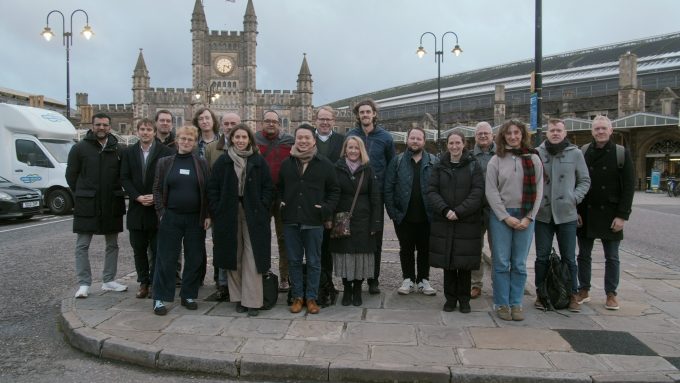
3Squared: Filling spare capacity on freight trains

Stand on a station platform next to a busy intercity rail route and there’s every chance a freight locomotive will thunder through pulling a lengthy train of wagons. But it’s unlikely that every wagon will be carrying a large steel container full of cargo.
In an effort to get more freight containers onto trains that are not fully loaded, rail software company 3Squared has developed a solution known as PathPlanner to provide details of goods trains that are running, their schedules and their current capacity. This means that rail freight companies, port operators and logistics firms will have an option to book more containers on to services departing soon.

The company secured £100,000 two years ago to develop a proof of concept for the tool, from the Transport Research and Innovation Grants (TRIG) programme’s ‘Future of Freight’ challenge theme, delivered by Connected Places Catapult on behalf of the Department for Transport.
PathPlanner combines seven years’ worth of historical data with real time information and a machine learning algorithm to identify rail paths with spare capacity, allowing companies to bid for a slot.
Under the TRIG grant, 3Squared was able to develop a proof-of-concept solution able to add many more data feeds to the system that made visible the spare capacity on trains that had empty wagons; enabling late notice bids for containers to be added at short notice.
Access to the railway is difficult, visibility of what the railway can offer is a significant problem and underpins a view among the supply chain that rail is difficult to navigate. This causes issues around ports and operators lose out every time a freight train leaves half emptyJason Durk, 3Squared
“Large ports can have thousands of containers stacked up, waiting to go. Imagine if ten of those containers could be placed on to a train heading in the direction they need to go at short notice. Our end goal is to encourage modal shift from road to rail, to get more heavy goods vehicles off our busy highway network to benefit the environment.”
Jason has worked in the railways for 30 years and is familiar with how the sector operates and its issues. But having a funded project through TRIG offered him the ability to talk to more people, he explains. “It made conversations a whole lot easier with senior professionals, and opened many doors.”
His team used the TRIG money to conduct a stakeholder engagement exercise involving dozens of rail and supply chain representatives over eight months about the data available to them, and how it was being used. Jason has also been working with trade association Logistics UK to identify companies who are keen to carry more goods by rail, and to showcase how his system could be used to good effect.
“We’ve almost got a product that satisfies what we asked of it, and this time next year I would hope we have a system that is being used right across the UK’s railway network. We hope to make the railway more accessible using data, work more efficiently and achieve environmental benefit.”
Jason urges other transport entrepreneurs with big ideas to apply for TRIG funding; and not just because of the money on offer. “The business advice you can access through the programme is great,” he says.
Applications are open until 27 November to take part in the 2023 TRIG programme.





